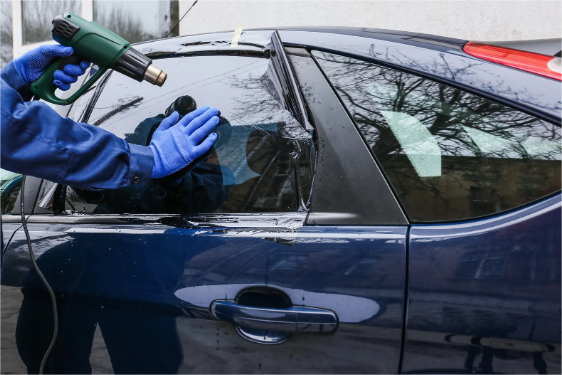Understanding the Legal Regulations of Car Window Tinting: What You Need to Know

Car window tinting offers numerous benefits, from enhancing privacy and reducing glare to protecting against harmful UV rays. However, before tinting your car windows, it's essential to understand the legal regulations governing this modification. Each state or country has laws regarding the darkness of tint permitted on vehicle windows, and violating these regulations can result in fines or penalties. In this article, we'll explore the key aspects of legal regulations for car window tinting and what you need to know to ensure compliance.
Visible Light Transmission (VLT) Percentage
One of the primary factors regulated by legal authorities is the Visible Light Transmission (VLT) percentage allowed for vehicle windows. VLT refers to the amount of visible light that can pass through the window tint film. The lower the VLT percentage, the darker the tint, and vice versa. Different states and countries have specific regulations regarding the maximum allowable VLT percentage for different vehicle windows, including the front windshield, front side, and rear windows.
Front Windshield Tinting
In many jurisdictions, tinting the front windshield is heavily restricted or prohibited. This is primarily due to safety concerns, as tinted windshields can reduce visibility, especially at night or in adverse weather conditions. However, some states allow a strip of tint, known as a "visor strip," along the top portion of the windshield to reduce glare from the sun. It's crucial to check the specific regulations in your area regarding front windshield tinting to avoid legal issues.
Front Side Windows
The regulations for tinting front side windows (i.e., the windows adjacent to the driver and front passenger) vary widely from state to state and country to country. Generally, most jurisdictions allow a certain level of tint on front side windows but restrict the darkness to ensure adequate visibility for law enforcement officers during traffic stops. Violating these regulations can result in fines, citations, or even vehicle inspection failures.
Rear Windows
The regulations for tinting rear windows (i.e., the windows behind the driver and front passenger) are typically less restrictive than those for front-side windows and windshields. However, there are still limits on how dark the tint can be, as excessive darkness can impede the ability of other drivers to see your vehicle, especially at night. Additionally, some jurisdictions prohibit completely opaque or reflective tints on rear windows for safety reasons.
Medical Exemptions
In some cases, individuals with certain medical conditions may be eligible for exemptions from window tinting regulations. These exemptions are typically granted to individuals with medical conditions requiring UV radiation or sunlight protection, such as photosensitivity disorders or skin cancer. However, obtaining a medical exemption usually requires documentation from a licensed physician and approval from the relevant authorities.
Enforcement and Penalties
Enforcement of window tinting regulations varies depending on the jurisdiction and the discretion of law enforcement officers. In some areas, police officers may use tint meters to measure the darkness of window tint during traffic stops. Suppose a vehicle is found to violate tinting regulations. In that case, the driver may be issued a citation, and the vehicle may be subject to inspection or removal of the tint film. Repeat violations can result in steeper fines or even license suspension.
All vehicle owners considering this modification must understand the legal regulations of car window tinting. By familiarizing yourself with the specific regulations in your area regarding VLT percentage, front windshield tinting, front side windows, rear windows, and medical exemptions, you can ensure compliance and avoid potential fines or penalties. Additionally, choosing a reputable tinting shop knowledgeable about local regulations is important and can help you select the appropriate tint for your vehicle while adhering to legal requirements. By following these guidelines, you can enjoy the benefits of window tinting while staying on the right side of the law.
- Industry
- Art
- Causes
- Crafts
- Dance
- Drinks
- Film
- Fitness
- Food
- الألعاب
- Gardening
- Health
- الرئيسية
- Literature
- Music
- Networking
- أخرى
- Party
- Religion
- Shopping
- Sports
- Theater
- Wellness
- News


